Weekly Current Affairs (8th to 14th January 2025) | General Test Preparation for CUET UG - CUET Commerce PDF Download
IIT Madras Inaugurates Asia’s Largest Shallow Wave Basin Research Facility
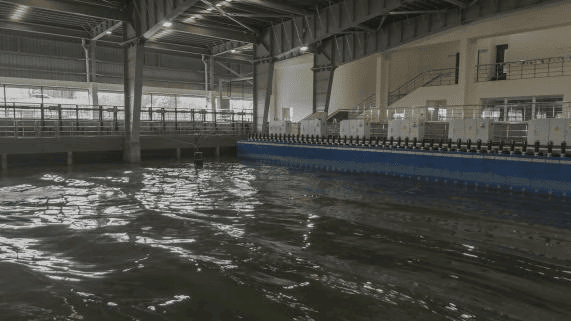 Why in News?
Why in News?
- The Indian Institute of Technology-Madras (IIT-M) has recently inaugurated Asia’s largest shallow wave basin research facility, located at the Discovery satellite campus in Thaiyur, approximately 36 km from the main IIT-M campus. This facility is a significant advancement aimed at fulfilling research and industry requirements in India, especially concerning coastal engineering and port management.
Key Takeaways
- The shallow wave basin is a multidirectional structure that can simulate complex wave and current interactions.
- Established by the National Technology Centre for Ports Waterways and Coasts (NTCPWC), it aims to address challenges faced by Indian ports and waterways.
- Most components of the basin were developed indigenously, showcasing IIT-M's engineering capabilities.
- The facility supports various research purposes, including testing coastal structures and analyzing climate change impacts.
- It encourages international collaboration in marine science and engineering.
Additional Details
- Indigenous Development: The majority of the wavemaker's fabrications were completed at IIT-Madras, promoting self-reliance and innovation in technology.
- Research Applications: The facility can be used for projects in harbour and offshore engineering, as well as inland waterways, making it versatile for multiple simultaneous experiments.
- The establishment of this facility is expected to enhance IIT-Madras' global standing and foster international partnerships.
- The NTCPWC aims to provide solutions to industry challenges, supporting the growth of maritime transportation.
This facility not only represents a leap in research capabilities for IIT-Madras but also aligns with national initiatives for developing new ports and enhancing coastal engineering projects in India. The shallow wave basin is poised to make a substantial impact in maritime research and engineering.
First US Death from H5N1 Bird Flu
 Why in News?
Why in News?
- On January 8, 2025, a Louisiana resident tragically became the first person in the United States to succumb to the H5N1 bird flu virus. This incident has raised concerns about the virus's potential impact on public health, despite health authorities assuring that the general risk remains low.
Key Takeaways
- A 65-year-old individual with underlying health conditions died after being hospitalized since mid-December.
- The Louisiana Department of Health confirmed the patient contracted the virus through exposure to non-commercial backyard flocks and wild birds.
- No further infections or evidence of person-to-person transmission have been reported in Louisiana.
Additional Details
- About H5N1 Bird Flu: H5N1 is a subtype of the influenza A virus that primarily affects birds but can occasionally infect humans, resulting in severe respiratory illness. The World Health Organization has documented over 950 global cases with a mortality rate of approximately 50%. The virus was first identified in 1996, with outbreaks increasing since 2020 affecting various mammal species.
- Symptoms of Bird Flu: Symptoms can range from mild to severe and include fever, cough, fatigue, and conjunctivitis. Some patients have reported nausea, vomiting, and shortness of breath, with pink eye being a common symptom linked to contaminated milk from infected cows.
- Transmission of Bird Flu: Human infections typically occur through direct contact with infected animals or their bodily fluids, such as saliva, respiratory droplets, and faeces. The virus is not transmitted through properly cooked poultry or eggs, and while limited human-to-human transmission has occurred, it has not been documented in the U.S.
- Diagnosis and Prevention: Bird flu is diagnosed using swabs from the throat, nose, or conjunctiva. Tests for H5N1 are not routine, and patients must inform healthcare providers of potential exposure. Preventive measures include wearing protective clothing, frequent hand washing, and avoiding contact with sick animals.
- Current Surveillance and Research Efforts: The U.S. government has increased funding for surveillance and research in response to rising concerns about bird flu. The recent death has led to discussions on improving public health responses and enhancing preparedness for potential outbreaks, with scientists actively working on vaccines to combat avian influenza.
This unfortunate event underscores the importance of continued vigilance regarding avian influenza and the need for public health readiness to manage potential outbreaks effectively.
What is AnemiaPhone?
 Why in News?
Why in News?
- Recent advancements have seen researchers from Cornell University transfer the AnemiaPhone technology to the Indian Council of Medical Research (ICMR). This groundbreaking tool provides a quick, precise, and affordable method for screening iron deficiency, which is a primary contributor to anaemia. Anaemia is particularly prevalent among pregnant women in India, with rates estimated between 50% and 70%. AnemiaPhone is expected to significantly bolster the efforts of India’s Anaemia Mukt Bharat programme, which aims to address anaemia in vulnerable populations.
Key Takeaways
- AnemiaPhone is a portable device designed for the assessment of iron deficiency.
- The device uses a straightforward test strip that requires only a drop of blood and delivers results within minutes.
- Results are uploaded to a clinical database via mobile devices, allowing for immediate medical guidance.
Additional Details
- The Need for AnemiaPhone: Anaemia affects millions, particularly women and children. In India, the prevalence of anaemia among women aged 15-49 is 57%, while 67.1% of children aged 6-59 months are affected. Traditional laboratory testing methods are often limited by high costs and logistical barriers, making AnemiaPhone a solution that decentralizes healthcare by facilitating testing at home or in local clinics.
- Development and Transfer of Technology: The AnemiaPhone technology was developed by Cornell University in collaboration with experts in precision nutrition and health. It underwent extensive testing in India to ensure reliability and accuracy. The technology was formally transferred to ICMR on November 7, 2024, at no cost, reflecting a dedication to improving public health.
- Integration into Anaemia Mukt Bharat Programme: Launched in 2018, the Anaemia Mukt Bharat (AMB) initiative aims to reduce anaemia among key demographics. The programme employs a 6X6X6 strategy focusing on six target groups, interventions, and institutional mechanisms. AnemiaPhone is set to enhance the effectiveness of the programme by providing accessible testing solutions.
The AMB programme includes several interventions such as:
- Prophylactic iron and folic acid supplementation.
- Behaviour Change Communication campaigns to encourage dietary diversity and consumption of iron-rich foods.
- Utilization of digital methods for testing and treatment, particularly among pregnant women and adolescents.
- Addressing non-nutritional causes of anaemia, including malaria and hemoglobinopathies.
- Management of severe anaemia through intravenous iron administration and blood transfusions.
Challenges and Future Directions
- Despite progress, challenges persist, such as the impact of the COVID-19 pandemic on programme implementation.
- The government is focused on strengthening partnerships and enhancing capacity-building initiatives for healthcare providers.
- Efforts are underway to improve anaemia management across all states and union territories.
The future of anaemia screening in India looks promising with the integration of AnemiaPhone into national health initiatives. By decentralizing access to testing, healthcare delivery can be significantly improved, especially in underserved regions. This technology has the potential to revolutionize anaemia management and enhance health outcomes for millions across the country.
NCLT Appointments Boost Corporate Governance in India
 Why in News?
Why in News?
- The Ministry of Corporate Affairs (MCA) has made a significant decision by appointing 24 new members to the National Company Law Tribunal (NCLT) on January 7, 2025. This initiative is intended to improve the tribunal's efficiency in resolving corporate disputes, addressing the rising need for effective management of issues such as insolvency, mergers, and various corporate conflicts in India.
Key Takeaways
- A total of 24 new members have been appointed to the NCLT, including 11 Judicial Members and 13 Technical Members.
- Each member will serve a tenure of five years or until they reach the age of 65.
- The appointments aim to enhance the tribunal's capacity to handle complex corporate cases efficiently.
Additional Details
- Key Appointees: Notable members include Justice Jyotsna Sharma and Sunil Kumar Aggarwal as Judicial Members, and Reena Sinha Puri and Siddharth Mishra as Technical Members. Their varied expertise is expected to contribute to a balanced adjudication process.
- Implications for Corporate Disputes: The new appointments are anticipated to decrease the backlog of pending cases at the NCLT, particularly those related to the Insolvency and Bankruptcy Code (IBC) and the Companies Act. This is crucial for fostering confidence among businesses and investors.
- Overview of the Insolvency and Bankruptcy Code (IBC): Implemented in 2016, the IBC consolidates various laws to streamline insolvency resolution processes, aiming to protect creditor interests and promote entrepreneurship.
The restructuring of the NCLT with these new appointments is a strategic move to enhance corporate governance in India, ensuring a more effective resolution of corporate disputes and fostering a stable business environment.
Haryana’s Declining Sex Ratio at Birth
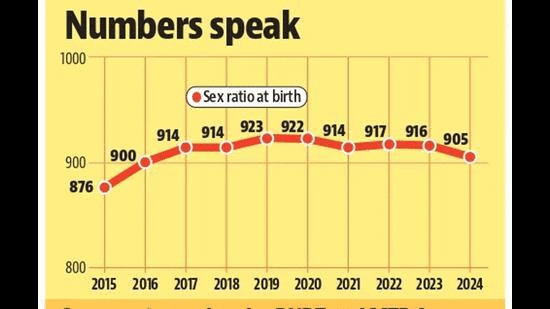 Why in News?
Why in News?
- As of January 10, 2025, Haryana has recorded a troubling decline in its sex ratio at birth, which has reached its lowest point in eight years at 910 girls for every 1,000 boys. This alarming figure has raised concerns among activists and civil society, while government officials characterize it as a minor fluctuation. The sex ratio is a significant measure of gender equality and reflects the overall status of women in society. Nationally, India reported a sex ratio of 929 in the National Health and Family Survey-5 (NFHS-5) published in 2021.
Key Takeaways
- The sex ratio at birth in Haryana fell to 910 in 2024, down from 916 in 2023.
- This decline follows a peak of 923 in 2019, indicating ongoing challenges in gender equity.
- Efforts like the 'Beti Bachao Beti Padhao' campaign aim to improve the situation.
Additional Details
- Sex Ratio at Birth: This metric measures the number of female births per 1,000 male births, and a balanced ratio is crucial for achieving gender equity and societal wellbeing.
- Historical Context: In 2014, the sex ratio at birth in Haryana was alarmingly low at 871, prompting protests and initiatives aimed at improvement.
- The recent birth statistics indicate 270,354 boys and 246,048 girls born, highlighting a troubling trend.
- Government Initiatives: Over 4,000 arrests have been made under the Pre-Conception and Pre-Natal Diagnostic Techniques Act, 1994 (PNDT Act) in the past decade, alongside financial incentives for families with daughters.
- Activists emphasize the need for stronger enforcement of laws to combat female foeticide and advocate for better societal attitudes towards girls.
This decline in Haryana's sex ratio underscores the persistent issues of gender bias in the state. Despite government efforts and campaigns aimed at improving the status of girls, societal attitudes remain a significant barrier. Continued advocacy and stricter law enforcement are essential to reversing this trend and achieving gender equity.
Assam Seeks Defence Industrial Corridor Development
 Why in News?
Why in News?
- On January 10, 2025, Chief Minister Hemanta Biswa Sarma of Assam announced that discussions are ongoing with the central government regarding the proposed establishment of a defence industrial corridor in Assam. This initiative is designed to improve the logistical support for the armed forces in northeastern India, mirroring similar successful projects in Uttar Pradesh and Tamil Nadu.
Key Takeaways
- Assam is in talks with the central government to create a defence industrial corridor.
- This corridor aims to enhance military logistics in the northeastern region.
- The initiative follows the establishment of similar corridors in Uttar Pradesh and Tamil Nadu.
Additional Details
- Background of Defence Industrial Corridors: The Government of India launched these corridors to stimulate domestic defence manufacturing, aiming to attract investment, create job opportunities, and establish a strong supply chain for defence equipment.
- Importance of Assam's Defence Corridor: Assam's geographical position is vital for national security, especially concerning its borders with China, Bangladesh, and Myanmar. This corridor will enable local repair and maintenance of military equipment, thereby reducing reliance on distant facilities in Uttar Pradesh and Rajasthan.
- Current Status of Discussions: Chief Minister Sarma has remarked that talks with the Indian government are progressing positively, reflecting increasing demand for local defence production capabilities.
- Investment Potential and Economic Impact: A defence corridor in Assam could significantly boost the local economy, similar to the anticipated ₹20,000 crore investment in Uttar Pradesh by 2024-25.
- Existing Defence Industrial Corridors Overview: The Uttar Pradesh Defence Industrial Corridor comprises six nodes: Aligarh, Agra, Jhansi, Kanpur, Chitrakoot, and Lucknow. The Tamil Nadu Defence Industrial Corridor features five nodes: Chennai, Hosur, Coimbatore, Salem, and Tiruchirappalli.
- Future Prospects for Assam's Defence Corridor: The successful implementation of this corridor is expected to enhance military readiness and bolster local economies, demonstrating a commitment to strengthening India's defence infrastructure in strategically significant regions.
The establishment of a defence industrial corridor in Assam represents a crucial step towards improving the region's defence capabilities and economic development, fostering a more robust military infrastructure in northeastern India.
ICEGATE and Trade Data Challenges
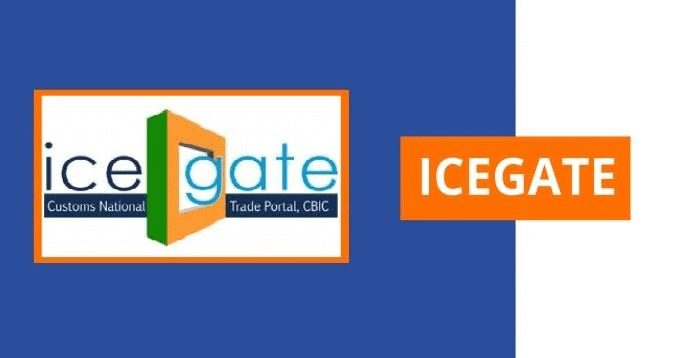 Why in News?
Why in News?
- Recent developments in India's trade data management have highlighted significant changes in the compilation of import and export statistics. The transition from the SEZ Online System to the Indian Customs Electronic Gateway (ICEGATE) has raised concerns regarding data accuracy, particularly the issue of double counting. This migration, which began in May 2024, aimed to streamline the accounting of imports, especially those entering Special Economic Zones (SEZs). However, technical difficulties have complicated this process, resulting in discrepancies in reported trade figures.
Key Takeaways
- The transition from SEZ Online System to ICEGATE aims to unify trade data reporting.
- Technical glitches have led to concerns about double counting of trade figures.
- Accurate tracking of goods movement is essential for customs duty assessments.
Additional Details
- ICEGATE: This is the national portal of the Central Board of Indirect Taxes and Customs (CBIC), responsible for recording imports at non-SEZ ports. Previously, the SEZ Online System was used exclusively for over 100 SEZs, with both systems providing separate data to the Directorate General of Commercial Intelligence and Statistics (DGCIS) for foreign trade statistics.
- Migration Issues: The migration process has involved transferring data from the SEZ Online System to ICEGATE. However, the old system did not automatically transfer Bills of Entry for imports into the Domestic Tariff Area (DTA), leading to ICEGATE not differentiating between imports into SEZs and those from SEZs into DTAs.
- Double Counting Problems: Double counting has emerged as ICEGATE treats movements of goods from abroad to SEZs and from SEZs to DTAs as separate transactions. For example, if 100 units are imported into an SEZ and 90 units are sent to a DTA, ICEGATE counts both transactions independently, causing inflated import figures.
- Customs Duties Implications: The movement of goods from DTAs to SEZs is classified as an export for customs purposes. This distinction is vital for accurately assessing customs duties, especially since goods manufactured in SEZs often undergo value addition in DTAs before returning to SEZs.
- The Government of India is working to upgrade ICEGATE’s digital infrastructure to enhance efficiency and speed in import counting.
The ongoing migration to ICEGATE, coupled with the continued operation of both SEZ Online and ICEGATE, is focused on improving the accuracy of trade data reporting. Addressing the issues surrounding double counting and data discrepancies is critical for ensuring that India's trade statistics accurately reflect the real dynamics of imports and exports.
Kumbhvani FM Channel Launched
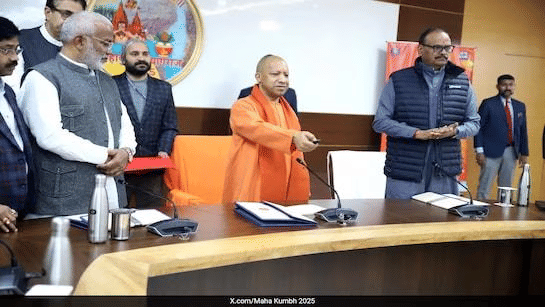 Why in News?
Why in News?
- The Kumbhvani FM channel has been inaugurated by Uttar Pradesh Chief Minister Yogi Adityanath on January 11, 2025, as part of the preparations for the Maha Kumbh festival. This initiative aims to provide better access to the Kumbh experience for devotees across India, particularly for those who are unable to attend the event in person.
Key Takeaways
- Kumbhvani FM channel operates at a frequency of 103.5 MHz.
- Broadcast period from January 10, 2025, to February 26, 2025.
- Daily programming from 5:55 AM to 10:05 PM.
Additional Details
- Special Broadcast Events: The channel will feature live broadcasts of significant bathing rituals occurring on January 14, January 29, and February 3, along with daily updates about festival activities.
- Cultural Programming: It will present a special program titled ‘Shiva Mahima’, highlighting Indian cultural heritage, and will host talk shows like ‘Namaskar Prayagraj’ from 9:00-10:00 AM and ‘From the Bank of Sangam’ from 4:00-5:30 PM.
- Health and Community Services: The channel includes the ‘Hello Doctor’ program for live health consultations, addressing the health needs of large gatherings.
- News and Information Broadcasting: Main news bulletins will be aired at 8:40 AM, 2:30 PM, and 8:30 PM, covering cultural events and providing vital information on travel, health, hygiene, and safety measures for attendees.
The Kumbh Mela is recognized as one of the largest religious gatherings globally, attracting millions of devotees. The launch of Kumbhvani FM by Prasar Bharati is a significant effort to preserve and promote India’s rich cultural heritage while ensuring that everyone can participate in this monumental event, regardless of their physical presence.
What is Space Docking?
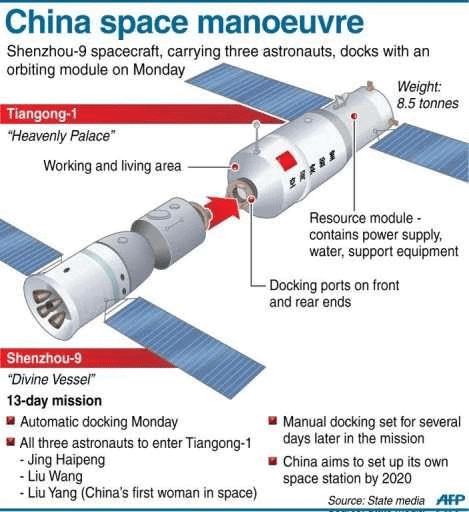 Why in News?
Why in News?
- The Indian Space Research Organisation (ISRO) is on the verge of achieving a significant milestone in space exploration. In the coming days, ISRO will attempt to dock two small satellites in orbit, which will mark India's debut in this intricate operation. A successful attempt would position India alongside the United States, Russia, and China as the fourth nation capable of docking operations. Initial trials have already been conducted, bringing both satellites within three meters of one another, although the actual docking has encountered delays.
Key Takeaways
- ISRO is set to attempt its first satellite docking mission.
- Successful docking would place India among the leading space nations.
- Initial trials have progressed, but docking has been delayed.
Additional Details
- Docking: Docking is the process of bringing two spacecraft together in orbit. This can occur either manually or autonomously. Docking is crucial for missions that involve multiple spacecraft working collaboratively, such as building a space station or transporting supplies and crew. This capability permits larger payloads that cannot be launched in a single rocket.
- Historical Context: The first successful docking was achieved in 1966 during the Gemini VIII mission, piloted by Neil Armstrong. Subsequent advancements include an uncrewed Soviet docking in 1967 and the Shenzhou 8 mission docking with the Tiangong 1 space laboratory in 2011.
ISRO has set ambitious goals for the future, aiming to establish a space station by 2035 and send humans to the moon by 2040. The successful docking of satellites is a pivotal step towards these objectives, particularly for the upcoming Bharatiya Antariksh Station, which will require multiple modules to be docked in space. The initial robotic module is expected to launch in 2028.
Chandrayaan-4 Mission Overview
- The Chandrayaan-4 mission will necessitate docking capabilities to return lunar samples to Earth.
- This mission will involve launching five key modules across two separate launches, with the propulsion module transporting the spacecraft from Earth orbit to lunar orbit, where the lander will gather samples.
- After sample collection, the ascender will dock with a transfer module to facilitate the return of the samples to Earth.
Docking Experiment Details
- The docking experiment will include a series of maneuvers to bring the Chaser satellite closer to the Target satellite.
- The approach will occur at varying distances—5 km, 1.5 km, 500 m, 225 m, 15 m, and finally 3 m.
- Upon contact of the docking rings, they will retract and lock into place, allowing for power sharing between the satellites.
Challenges Faced by ISRO
- The docking mission has faced delays due to technical difficulties. Initial attempts scheduled for January 7 and January 9 had to be postponed because of unexpected challenges during maneuvers.
- Further simulations are being conducted to refine the docking process and ensure precision in future attempts.
ISRO’s Docking Mechanism
- Androgynous Design: ISRO's docking mechanism features an androgynous design, allowing both satellites to utilize identical systems. This design is akin to the International Docking System Standard but employs fewer motors.
- Advanced Sensors: The mission will utilize advanced sensors, such as Laser Range Finders and Proximity Sensors, to enable accurate measurements during the docking procedure.
- Additionally, ISRO aims to create autonomous systems that can perform docking operations without relying on satellite navigation data.
In conclusion, ISRO's upcoming docking attempt is a significant stride in India's space exploration journey, paving the way for future missions and technological advancements in the field.
India Joins UN Committee of Experts on Big Data and Data Science for Official Statistics
 Why in News?
Why in News?
- India's inclusion in the UN Committee of Experts on Big Data and Data Science for Official Statistics (UN-CEBD) signifies a significant advancement in the country's statistical framework. This decision underscores India’s dedication to leveraging data and technology for informed policy-making and aligns with global efforts to utilize data effectively, especially in tracking sustainable development goals.
Key Takeaways
- India's membership reflects its commitment to modernizing statistical practices.
- The UN-CEBD serves as a collaborative platform for countries to enhance their statistical capabilities.
- India's Data Innovation Lab plays a crucial role in utilizing alternative data sources.
Additional Details
- UN-CEBD: Established in 2014, this committee focuses on the application of Big Data in official statistics. It provides a forum for countries to exchange knowledge and strategies to incorporate non-traditional data sources into their statistical frameworks.
- India’s Data Innovation Lab: This initiative explores innovative data sources, such as satellite imagery and machine learning, aimed at enhancing the data analysis process for better policy formulation.
- Modernizing Statistical Processes: Through its membership, India aims to integrate diverse data types, including Internet of Things (IoT) data, to improve statistical accuracy and timeliness, which is vital for effective governance.
- Enhancing Decision-Making: The integration of Big Data techniques is expected to transform decision-making processes, enabling policymakers to make informed, evidence-based choices that address socio-economic issues.
- Strategic Opportunities: India’s role in the UN-CEBD aligns its domestic advancements in Big Data with international objectives, promoting knowledge sharing and collaborative initiatives.
- The Future of Big Data in India: Ongoing innovations and a focus on capacity-building are set to enhance data literacy, fostering public trust in the use of Big Data for official statistics.
In conclusion, India's engagement with the UN-CEBD not only enhances its statistical capabilities but also positions the nation as a key player in the global statistical community, paving the way for improved governance and policy-making through data-driven insights.
Semiconductor Synthesized from Graphene
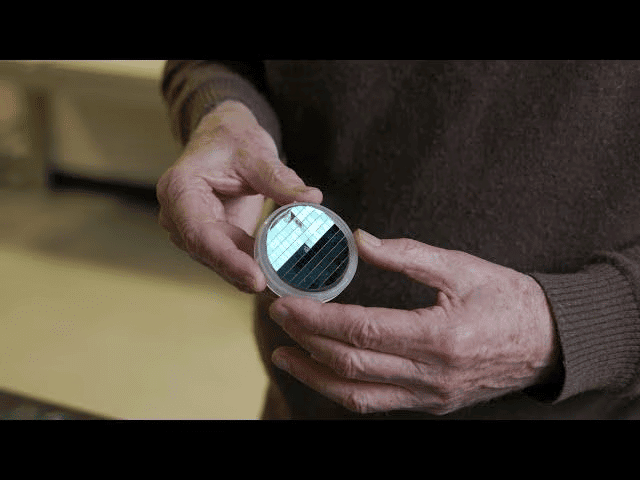 Why in News?
Why in News?
- In February 2024, a significant milestone in materials science was achieved when a collaborative US-China research team successfully synthesized a functional semiconductor from graphene. This groundbreaking development is poised to revolutionize multiple sectors, including electronics, energy storage, and medical devices. The remarkable characteristics of graphene, which include exceptional strength, high conductivity, and remarkable flexibility, have established it as a crucial material for future technological advancements.
Key Takeaways
- Graphene is a one-atom-thick layer of carbon atoms arranged in a two-dimensional lattice.
- It offers exceptional electrical and thermal conductivity, making it suitable for a wide range of applications.
- China leads the global graphene market, controlling over 70% of production as of 2023.
- India is making strides in graphene research, with key institutions and companies exploring innovative applications.
Additional Details
- Graphene: Graphene is recognized for its potential to drive innovations in computing, energy solutions, and advanced materials. Its unique properties provide a strong foundation for future technological developments.
- China's Market Position: Through strategic investments and national policies like 'Made in China 2025', China has rapidly advanced in graphene technology, emphasizing the need for secure access to essential resources such as graphite.
- India's Research Initiatives: Institutions like the Centre for Nano Science and Engineering at IISc Bangalore are at the forefront of graphene research, while companies such as Tata Steel and Log 9 are exploring its applications in plastic recycling and energy storage.
- Market Growth: The Indian graphene market is expected to grow at a compound annual growth rate (CAGR) of 20.1% from 2017 to 2027, driven primarily by the electronics sector.
- Challenges: India's graphene industry faces hurdles such as limited patent filings, lower production capacity compared to global leaders, and high production costs that affect competitiveness.
- Strategic Recommendations: To maximize graphene's potential, India should focus on establishing dedicated industrial parks for production, increasing R&D funding, and fostering international collaborations in graphene research.
In conclusion, the synthesis of a semiconductor from graphene marks a major advancement in materials science with the potential to transform various industries. Both China and India are significantly involved in the development of graphene technology, though challenges remain for India to fully realize its capabilities in this promising field.
Controversy Over Voter ID-Aadhaar Linking in Delhi
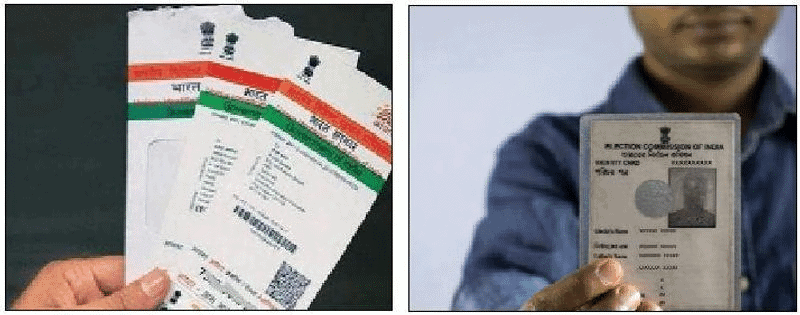 Why in News?
Why in News?
- The political atmosphere in Delhi has become increasingly contentious as the Aam Aadmi Party (AAP) and the Bharatiya Janata Party (BJP) engage in a heated exchange of accusations regarding the manipulation of electoral rolls in anticipation of the upcoming Assembly elections. This situation has reignited the debate about the proposal to link voter IDs, specifically the Election Photo Identity Card (EPIC), with Aadhaar numbers. The history of this proposal is characterized by a complex series of legal and administrative hurdles.
Key Takeaways
- The Election Commission (EC) launched the National Electoral Rolls Purification and Authentication Program (NERPAP) in February 2015.
- The Supreme Court intervened in August 2015, halting NERPAP, stating that Aadhaar linking should only be mandatory for welfare schemes.
- In December 2021, amendments to the Representation of the People Act, 1950 were made, allowing optional linking of EPIC with Aadhaar.
- The current status indicates that the submission of Aadhaar is not mandatory, yet forms still require voters to declare their Aadhaar status.
Additional Details
- National Electoral Rolls Purification and Authentication Program (NERPAP): This initiative aimed to eliminate duplicate entries in electoral rolls, successfully authenticating over 300 million voters within three months.
- Supreme Court Rulings: The court's decision in the Puttaswamy case affirmed the constitutional validity of the Aadhaar Act, leading to amendments that allowed optional linking of Aadhaar with EPIC.
- The amendments emphasize that no voter can be excluded from the electoral roll due to the lack of an Aadhaar number, permitting the use of alternate identification documents like PAN cards.
- Concerns regarding data misuse and privacy persist, necessitating clear communication from the Election Commission to maintain voter confidence.
The right to vote is a constitutionally protected element of democracy, and it is crucial for the Election Commission to address public concerns about privacy and data security. By effectively communicating the benefits of linking EPIC and Aadhaar and ensuring modifications reflect the voluntary nature of the process, the EC can foster trust in the electoral system.
India-Bangladesh Border Fencing Dispute
 Why in News?
Why in News?
- The border fencing dispute between India and Bangladesh has intensified recently, prompting significant diplomatic exchanges. The Ministry of External Affairs of India confirmed its dedication to the agreements related to the border following Bangladesh's summons of India's High Commissioner in Dhaka, where they expressed serious concerns regarding the activities of the Border Security Force (BSF). Tensions surged when the Border Guards Bangladesh (BGB) intervened to stop the construction of barbed wire fencing in West Bengal's Malda district.
Key Takeaways
- The India-Bangladesh border extends about 4,096.7 km, making it India's longest land border with any neighboring country.
- The 1975 Joint India-Bangladesh Guidelines for Border Authorities limit the construction of defense structures within 150 yards of the zero line, with differing interpretations between the two nations.
Additional Details
- Recent Incidents: In Malda, the BSF, alongside the Central Road Works Department, initiated the construction of a single row fence (SRF) in Kaliachak No 3 block. The BGB protested, claiming this action breached the bilateral agreement. Similar issues arose in Cooch Behar, where local villagers attempted to build fencing to protect their crops from cattle crossing from Bangladesh.
- Importance of Fencing: The BSF asserts that fencing is vital for preventing trans-border crime. Former officials noted that the SRF aims to regulate animal movement and deter illegal activities. They clarify that the fencing does not serve defensive purposes, unlike concrete walls or bunkers, which are perceived as threats by Bangladesh.
- Negotiation Challenges: Negotiations between the BSF and BGB have been marred by misunderstandings. Bangladesh’s objections to the SRF focus on adherence to the 1975 agreement and the inconvenience posed to local residents. Despite the BSF's assurances regarding the non-defensive nature of the SRF, Bangladesh remains skeptical.
- Current Status of Fencing: As of 2023, approximately 3,141 km of the India-Bangladesh border is fenced. Challenges include local objections, geographical constraints, and discussions with Bangladesh. Notably, over 900 km of the border is riverine, making fencing impractical; thus, the BSF relies on its water wing for security in these regions.
In conclusion, the ongoing border fencing dispute reflects deep-seated historical complexities and challenges in India-Bangladesh relations. The outcomes of current negotiations and incidents will significantly influence future border security and bilateral ties between the two nations.
Bhashini Revolutionises Mahakumbh Experience

Why in News?
- The Mahakumbh festival in Prayagraj, taking place from January 13 to February 26, 2025, is a significant spiritual gathering. The Ministry of Electronics and Information Technology (MeitY) has launched the Bhashini platform to improve communication among the millions of attendees, providing real-time translation and voice assistance in 11 different languages to ensure meaningful engagement for all visitors.
Key Takeaways
- Bhashini enhances multilingual accessibility for festival attendees.
- The platform includes a Digital Lost & Found Solution for reporting lost items.
- Kumbh Sah’AI’yak chatbot assists pilgrims with navigation and information.
- Integration of the UP 112 emergency helpline with Bhashini improves communication.
- Bhashini represents MeitY's commitment to technological innovation and inclusivity.
Additional Details
- Multilingual Accessibility: Bhashini allows visitors to communicate in their native languages, enhancing their experience. Attendees can report lost or found items through kiosks or mobile applications, particularly aiding those who may not be fluent in Hindi or English.
- Digital Lost & Found Solution: This feature enables users to report lost items or register found belongings using voice-based registration. Real-time text and voice translation supports effective communication.
- Kumbh Sah’AI’yak Chatbot: Launched by Prime Minister Narendra Modi, this voice-enabled chatbot utilizes advanced AI technologies, including Llama LLM, to assist attendees in multiple languages, thus supporting diverse linguistic needs.
- Emergency Helpline Integration: The Bhashini platform integrates with the UP 112 emergency helpline, featuring the ‘CONVERSE’ option for seamless communication between devotees and police officers, ensuring grievances are addressed promptly.
- Future of Digital Inclusion: Bhashini aligns with the vision of Digital India, aiming to empower citizens by connecting them to digital initiatives in their own languages and encouraging participation from startups and collaboration among stakeholders.
The implementation of the Bhashini platform at Mahakumbh 2025 highlights a significant commitment to fostering inclusivity and enhancing the overall experience for both domestic and international visitors. By breaking down language barriers, the platform enriches the spiritual journey of all attendees, embodying the essence of technological innovation in public service.
|
164 videos|632 docs|1150 tests
|
















